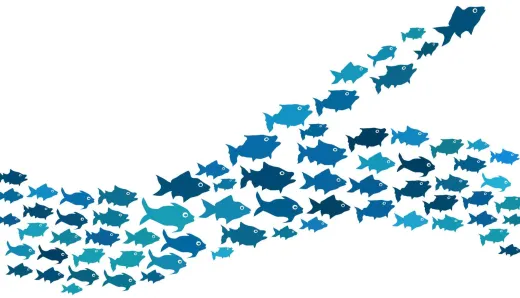How to develop omnichannel content distribution?

Brand’s success greatly depends on its customer-centric content distribution strategy.
Omnichannel content distribution is the new normal to engage the customers and enhance their experiences across all the channels (i.e paid media, owned media and earned media) throughout the customer journey. Create and distribute the content so that users will consume it through their journey to become a brand’s customers. Content to be available to the users across all channels when required.
Paid media is defined as external marketing channels and charges for broadcasting the content. Typical example of paid media are pay-per-click advertising, online and offline display ads and branded content. Paid media is a vital component to enhance revenue and brand awareness.
The goal of marketing is to spread your brand to a wider public and drive the traffic to own media.
Whether doing a promotion for festival sale, an explanatory video about a product or a brand or for a cause or charity- can be quickly shared to targeted audiences through paid media.
Paid media can be of different forms across different social media channels:
Facebook is known as the king of social media and offers various paid promotional choices, the most commonly used e-commerce are carousel ads, an option to showcase a larger range of products or to display a more detailed description. One can add up to 10 videos each with its own link in a single ad space(User can view multiple Images/Video in a single ad space). Carousel ads can be 30-50% economical than a single image link Ads and help in reducing per lead cost while increasing click-through rates.
Twitter offers promoted tweets and can be used to raise awareness of your business/event/action.
Instagram is another great social media marketing channel to advertise the content which more than 1 billion active users every month. An instagram is a visual medium to display ads either in the form of photos or videos. It has the potential to promote an ad to 300 million users daily.
Influencer Marketing is a form of marketing strategy where a social figure or a thought leader can promote content to his followers.
Paid content should complement and work in tandem with earned and owned content for successful omnichannel content distribution.
Owned media
Owned media such as company’s website and social media improves effectiveness of paid media and earned media.
Owned media is the foundation for online marketing efforts due to :
- Control: One should have complete control on owned media such as websites, blogs, and social media and no worrying of content expiry overnight.
- Reach: Content placed on owned media reaches a wider audience quickly.
- Longevity: Content exists as long as a company wants to retain.
- Versatility: One can post a variety of content on their pages.
- Cost efficiency: Publishing the content on owned media is very cost effective
Earned media
The most satisfied customer would be your distribution channel,earned media is very effective when a satisfied customer gives ratings and reviews about your product, service and other users refer these reviews before consuming your services or products, this will enhance value and trust for your brand
Earned media improves your organic ranking on search engine pages and has the potential to take content ‘viral’. Brand success depends on search engine ranking and this will be achieved by distributing the content through owned media and enhance the engagement. Examples of earned media include word-of-mouth, shares, reviews, reposts by yourself or third parties.
Customers consume the content if it is relevant and interested through multiple touch points exists online (Text, Voice, Video, articles, ebooks, infographics, email campaigns, social media, mobile apps, VR, AR, etc.) and offline (In-store environments, Print Ads, catalogs, product brochures, etc.).Brand’s success depends on its content.
Building Blocks of Omnichannel Content distribution
KYC (Know Your Customer)
Know your customer in order to design customer-centric content. Content that is not customer-centric will irritate its recipients and lead to negative earned media.
Scan the customer details to get information such as customer age, location, gender, interests, their behavior, their experiences with your brand, identify loyal customers, frequent buyers, or uninterested customers.
Maintain similar message across all channels
The message that shares the brand’s identity, services, and mission through videos, interactive games, website copy, and apps should be similar across all channels.This is a very important trait of successful content distribution strategy.
Ensure the same look and feel
Brand’s Omnichannel content ensures the same look and feel by ensuring the same colors, fonts, design even though it’s delivered through different channels and formats. Cohesive design improves brand visibility and thus brand adoption as well.
Provide the same customer experience across multiple touch points
Content should be consumed by the customer in an omnichannel approach by combining online and offline approach. Customers can get the inventory of your brand, product stories, offerings, functionality through touch screens placed at the store. This strategy combines the online shopping experience in the store.
Let’s look into Disney’s omnichannel experience, it starts with a beautiful mobile responsive website, even it's trip planning website works well on mobile. Once the trip has been booked, you can use My Disney experience tool to plan your entire trip, from where you will dine to securing your fast pass. In the park you can use your mobile app to locate the attractions you want to see, as well as view the estimated wait time for them. The entertainment company took the user experience one step further with the release of the magic band program. This tool acts as a hotel room key, a photo storage device for any pictures taken of you with Disney characters and a food ordering tool. Even it has fast pass integration to keep your vacation moving. That's truly omnichannel experience.
Conclusion
Brands that intend to remain competitive online cannot do so without a solid omnichannel content distribution strategy. An omni-channel approach will promote a holistic understanding of your customers’ behavior, your brand’s reach, conversion, and retention capabilities.



